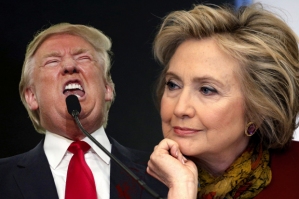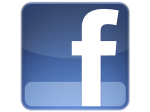Any liberal, compassionate and freedom-loving individual would be distressed at the condition of India today. The world’s largest democracy, once hailed as an example for the whole of the developing world to emulate, is sliding into the morass of fascistic autocracy (based on Nazi-style religious nationalism) under the Narendra Modi regime. The puzzling fact is that even after performing miserably on all fronts, and getting only 37% of the votes of 60-70% of the total populace who voted, they have become a commanding presence in the parliament and many of the states of the Hindi belt. So much so, that they have dropped all pretense of their “development” agenda and are going ahead aggressively with the Hinduisation of the Indian subcontinent. Attacks on minorities, discriminatory laws against Muslims, and illegal arrests and detentions of all critics of the regime have all become the norm; and all three arms of the democracy (legislative, executive and even the judiciary) seem to be toeing the government line. The Bharatiya Janata Party (Modi’s party), the political wing of the Hindu fundamentalist Rashtriya Swayamsevak Sangh (or RSS for short), have become so confident that they are talking of ruling India forever and converting it into a Hindu nation – and realists are afraid that their confidence is not entirely misplaced.
Why? Why did the country which began its life as a secular democracy in 1947 slip into this religio-nationalistic madness? How did this fringe group of Hindu fanatics slowly become the mainstream and start controlling the national narrative? Is it because Hindus are essentially fundamentalist, and secularism was just an illusion? Or has something happened in this seventy plus years to push the majority religion more and more on the path to fundamentalism?
Looking at our history and culture, I have decided upon three possible causes for India’s shift to the right. Please note that this is only my personal reading; my opinion is formed based on my observations and reading. I have no claims to scholarship of any kind.
The Essential Religiosity of India vs Political Correctness
I would like to narrate two incidents. One way back in the middle eighties, one earlier this year.
I was living with my parents and had just started on my first job. My sister, eleven years younger to me, was in middle school. One day she had a query: the teacher had asked her to name three festival indigenous to Kerala. What should she write? My mum said – of course, Onam, Vishu and Thiruvathira! These were the three festivals unique to Kerala.
The next day, my sis came home angry and frustrated after a fight with her teacher. She had rejected her answer, and asked her to write “Onam, Christmas, Ramzan (meaning Eid-ul-Fitr)”. My sister objected vehemently, saying that the last two were universal and not indigenous to Kerala. The teacher put her foot down. She said she agreed, but unless she wrote like that, no marks would be given – because that was what was “officially” expected!
It was my first brush with political correctness.
Now fast forward to 2020. In one of the WhatsApp groups that I am a member of, someone made an observation that Onam was the only festival of Kerala. I countered, citing Vishu and Thiruvathira once again; the the argument was that they could not be called “festivals of Kerala” because they are not “secular”! I stuck to to my guns, saying that secularism had nothing to do with it. The arguments went back and forth, ultimately with the admin calling me and warning me about “politicising” the group.
Political correctness had struck again.
This is the popular liberal narrative of India – that India is a secular country, that our ethos is one of tolerance (this is echoed by Hindu apologists too) and that there is no predominant “Hindu” culture. I had also subscribed to these popular half-truths at one point of time – until I forced myself to swallow the bitter pill and wake up to reality.
It is true that the concept of an overarching Hinduism – or the “Sanatana Dharma”, as its promoters like to call it – is a myth. However, there is indeed a common cultural thread running across the Indian psyche: and that is deeply religious. What the Vedic religion had done was to assimilate all the varied gods and goddesses spread across the subcontinent under their umbrella. Many of these faiths were at war with one another (so much for tolerance!) but pluralism was the accepted norm. So Hinduism as we know now, rather than being the tolerant monolith it is being touted as, is a potpourri of contradictory believes subsumed under an overarching philosophy. And it is this philosophy which is being used by the advocates of cultural nationalism to advance their fascistic intentions.
Indian Liberals go wrong (as evidenced in the examples I quoted above) in negating this religiosity. They stubbornly hold on to their fantasy of a secular, non-Hindu India, and play into the hands of the right-wingers.
The Twin Cancers of Caste and Patriarchy
Everyone in the world knows what caste is – it is the insidious social system in India which marginalises a huge section of its own people. What most people don’t know (and those who know won’t accept), is that caste does not limit itself to the Hindu upper castes.
I remember seeing a Malayalam movie named Sthanaarthi Saramma (“Candidate Saramma”) in my childhood. It was about two rival candidates for a Panchayat election being in love with each other – Saramma and Johnnie Kutty. What I couldn’t understand was that why their love was frowned upon by the hero’s family – weren’t both Christian? Then my mum told me that Saramma was a “lower caste convert Christian”, from the fisher-folk community, so Johnnie Kutty’s “upper-caste” Christian parents could never accept it. It was the first time that I understood that caste was not limited to Hindus alone.
Fast forward to 2019, when a Dalit Christian youth, Kevin, was murdered in a case of honour killing – because he had committed the crime of marrying an upper-caste Christian girl. (Unlike movies, life always doesn’t have nice endings to love stories.) Clearly, not much had changed in almost half a century.
Now coming to patriarchy – it’s the fashion to blame it all on the Brahmins (“Smash Brahmin Patriarchy!”) like caste: but again, it’s another half-truth. No doubt Brahmins are patriarchal – but so are almost all other communities (except a few matrilineal societies scattered across the country). And even in those matrilineal societies, men have usurped control to a large extent.
By holding Brahmins and Brahminism responsible for a social ill towards which every community contributes, essential focus is lost.
Minority Communalism
This is a potential landmine. The moment any intellectual addresses this, he is immediately labelled a “sanghi” (a derogatory name for a Hindu fundamentalist) and cast into the outer darkness where there is wailing and gnashing of teeth.
According to the liberal narrative, fundamentalism is present among Muslims, but these are “fringe groups” and the majority is secular. While it is true that a huge majority of Muslims are not fanatics, neither do they call out the actions of the fundamentalists – the fanatics are too strong, and there is real fear. Even more disturbing is the fact that many Islamic organisations who are legitimately operating are, to a large extent, fanatical. They are not fringe groups by any stretch of imagination.
On July 4, 2010, Professor Joseph had his hand chopped off by Islamic extremists for allegedly insulting the Prophet Mohammed. This happened in broad daylight. Even though all the miscreants have been punished, one can still see comments on social media about the “mistake” committed by the Professor: even though many condemn the extremist action, they also place the professor in the dock.
Similarly, the actions of the Muslim kings of India who looted temples are brushed under the carpet. It is a fact that these kings were not fanatics – rather, they were opportunists, who protected temples under their watch and destroyed those in a neighbouring country. (Tipu Sultan is the prime example.) Instead of highlighting this fact, the liberal narrative paints these conquerors in rosy colours, holding them up as epitomes of secularism – in the process, pissing off Hindus who are not addicted to political correctness.
The Way Forward
To get Indian liberals out of the morass that they themselves have created, and to protect secularism and democracy of our fledgling nation (yes, I consider ourselves pretty young – only 73 years old), we need to do three things.
- Accept the fact that Hinduism is not all Brahmin propaganda. It has got all of India in it. What has happened is that the Vedic religion has appropriated and standardised it. We must oppose this standardardisation and decentralise our culture.
- Caste and patriarchy are not just Savarna things. Each caste oppresses the castes below them. And almost all communities oppress their women. There is no easy, one-stop solution to this – this imbroglio has to be unravelled one knot at a time. Education holds the key.
- Islamic fundamentalism is as dangerous as Hindu fundamentalism. There should be no compromise (not even political soft-pedalling) when faced with it.
It is a slow, hard climb. In the short-term, we are fated to suffer a period of majoritarian autocracy. But if we are ready to face the facts honestly and start acting accordingly, we can build the India the founding fathers had in mind – at least one or two generations down the line.








 The right-wing filmmaker Vivek Agnihotri published a book called Urban Naxals: the Making of Buddha in a Traffic Jam in 2018, in which he put out the nonsense theory that Indian intelligentsia and academia were riddled with covert ultra-leftists bent on overthrowing the state. This was ostensibly the story of the making of his atrociously bad film Buddha in a Traffic Jam (which deservedly bombed at the box-office), which had the same theme as the book – and how, at each step, he was attacked and thwarted by the Maoist intelligentsia permeating all the institutions of India. The premise was silly beyond imagination, but in Narendra Modi’s India where right-wing paranoia ruled the roost, the book was a big hit and began to be taken seriously by a huge chunk of the population. Soon it was linked to Islamic terror, Pakistan, and all kinds of “anti-national” activities, and India was in the grip of a full-scale paranoia.
The right-wing filmmaker Vivek Agnihotri published a book called Urban Naxals: the Making of Buddha in a Traffic Jam in 2018, in which he put out the nonsense theory that Indian intelligentsia and academia were riddled with covert ultra-leftists bent on overthrowing the state. This was ostensibly the story of the making of his atrociously bad film Buddha in a Traffic Jam (which deservedly bombed at the box-office), which had the same theme as the book – and how, at each step, he was attacked and thwarted by the Maoist intelligentsia permeating all the institutions of India. The premise was silly beyond imagination, but in Narendra Modi’s India where right-wing paranoia ruled the roost, the book was a big hit and began to be taken seriously by a huge chunk of the population. Soon it was linked to Islamic terror, Pakistan, and all kinds of “anti-national” activities, and India was in the grip of a full-scale paranoia.






 While this interconnectivity had its positives, it has its negatives too: the most obvious one being the loss of veracity. Anyone with a good vocabulary and a smattering of knowledge can put up articles which would have a sufficient veneer of truth to hoodwink the gullible. And with social media now ruling the roost, truth has gone for a toss. The same syndrome is affecting the so-called “debates” on TV, which are nothing but shouting matches, each participants brandishing “facts” to support his or her viewpoint.
While this interconnectivity had its positives, it has its negatives too: the most obvious one being the loss of veracity. Anyone with a good vocabulary and a smattering of knowledge can put up articles which would have a sufficient veneer of truth to hoodwink the gullible. And with social media now ruling the roost, truth has gone for a toss. The same syndrome is affecting the so-called “debates” on TV, which are nothing but shouting matches, each participants brandishing “facts” to support his or her viewpoint.

